I’M NO MICHELANGELO, BUT . . .
Lawn Nouveau
I’m taking up sculpture. Not in bronze, Carrara marble, or granite, but with plants.
My easiest sculpture is one I’ve been doing for years. I can’t really say “working on for years” because every year it vanishes, to be started anew each spring. It’s “lawn nouveau,” as I call it in my book, The Pruning Book, and then go on to describe the technique as “two tiers of grassy growth . . . the low grass is just like any other lawn, and kept that way with a lawnmower. The taller portions are mowed infrequently – one to three times a year, depending on the desired look (and my need for hay) — with a scythe or tractor.” The sharp, defining line between the high grass and the low grass is integral to the design.

I’m lucky to have a meadow bathed in sunlight bordering the south side of my property. But even a small yard might be able to accommodate lawn nouveau. My three-quarter of an acre yard did before the meadow shifted to my care. (Previous owners had maintained it as very large lawn with weekly or biweekly mowing.)
This sculpture has many pieces to it.
One is how I manage it with mowing the whole meadow either at the end or the beginning of the growing season, a necessary task or the meadow will naturally revert over time to forest. Even a once a year mowing might be insufficient, as I realized a couple of years ago with the increasing encroachment of woody shrubs and vines such as poison ivy, grape, and multiflora rose.
Repeated mowing during one season brought the meadow back in order, mostly with grasses. Over time I expect and hope for a resurgence also of more goldenrods, bee balms, and other herbaceous, flowering plants.

The look of the meadow is also influenced by a season’s weather. And by the progress of the season, the meadow’s appearance being very different as grasses morph from succulent green leaves in spring to late summer’s tawny shoots and seed heads. Late summer also brings on showy flowers.
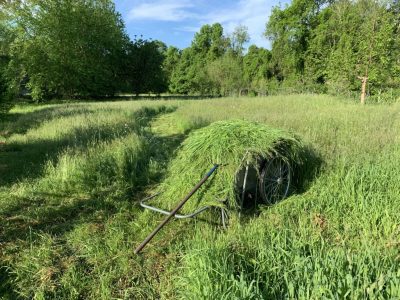
Even the time of day; it’s early morning appearance is quite different than its appearance at various times throughout the day, all dependent also, of course, on what’s happening up in the sky. All this making for a very interesting sight of varying beauty.
A lot of this is either beyond my control or very unpredictable. What is neither is my mowing during the growing season. Each spring I lay out a path, maintained by mowing with my tractor, that wends its way through the meadow.

The goal is to make it inviting and practical. Practical because it carries you to the end of the meadow into a bosk of maples, river birches, and one large buartnut tree, and then on to a studio building.

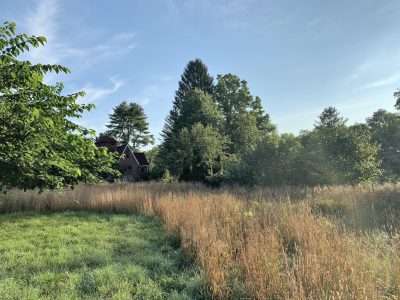
This year I decided to also sculpt more edges of the meadow, cutting the high grass with a scythe to a pattern that matches the flow of the path within. One of my favorite views of the meadow is from an upstairs window, its height allowing me to visually swallow the whole view.
A Head for Yew
Another plant sculpture here is a large yew that I’m carving to become a fifteen foot high head. This one is easy enough because I’m merely copying one of a series of such heads living in a public garden in Britain.
The bush is old, 40 years at least, and has always been pruned to a cone shape with slightly rounded rather than straight sides.
Creating the facial features has involved some deep pruning down into the center of the bush. Yew is a forgiving plant, readily resprouting from even old wood. Problem is that some of those interior stems are old and dead.
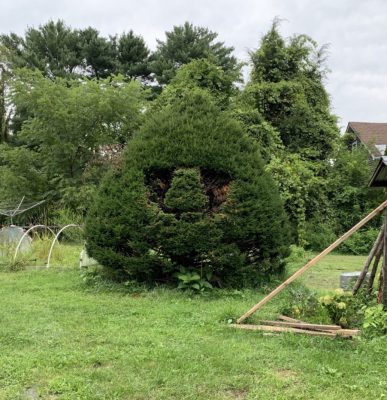
The challenge, then, is time, to be patient for sprouts to grow where light now is penetrating. And then to trim those sprouts so that all levels of the sculpture present green surfaces.
Cloudy Aspirations
And finally, my most difficult sculpture, one for which I each year claim improvement, but not success. The plants: yews again. In this case, there are four of them, all maintained four to five feet high so as not to block the windows of the wall they front.
Originally, they were pruned as a standard yew-along-house-foundation hedge. A few years ago, I morphed them into something more interesting and humorous, a giant caterpillar, with some success. (My inspiration here was the work of Keith Buesing, topiarist extraordinaire of Gardiner, New York.)
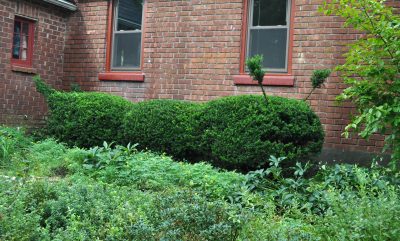
More recently for these plants, I decided to try a method of pruning known as okarikomi, a technique that originated in Japan. In this case, a group of shrubs, rather than maintaining their individual identity, are pruned to flow together to create a scene reminiscent of billowing clouds or a distant, rolling landscape.
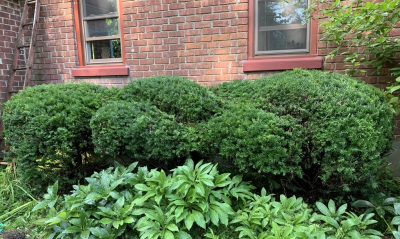
Thus far, I’m not pleased with my pruning. But every year I make some changes and it looks better than it did the previous year.
Plants are very forgiving. Every year, even during each growing season, I have opportunity to change my sculptures according to my whims or what looks nicer to me. What will the meadow, the yew head, and the okarikomi yews look like next year?
And Composting
In case you didn’t notice my previous post, I will be holding a composting workshop/webinar Wednesday, September 23, 2020 at 7 PM. For more information, go to www.leereich.com/workshops.

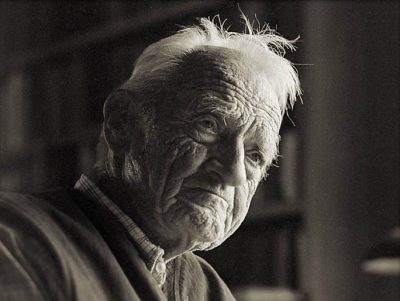 Scott Nearing was a professor of economics, a political activist, a pacifist, a vegetarian and an advocate of simple living. And a gardener. For many of these reasons, he was almost a cult figure back in the 1970s when I, a young man, visited him. He was then known mostly for his book Living the Good Life. I had read the book, and decided to drive 1,000 miles from Madison, Wisconsin to show up on his farm, unannounced, in Harborside, Maine.
Scott Nearing was a professor of economics, a political activist, a pacifist, a vegetarian and an advocate of simple living. And a gardener. For many of these reasons, he was almost a cult figure back in the 1970s when I, a young man, visited him. He was then known mostly for his book Living the Good Life. I had read the book, and decided to drive 1,000 miles from Madison, Wisconsin to show up on his farm, unannounced, in Harborside, Maine. For me, working my field in the quiet of early morning, with the sun low in the sky and grasses still moist from morning dew, is sheer pleasure. A morning dance.
For me, working my field in the quiet of early morning, with the sun low in the sky and grasses still moist from morning dew, is sheer pleasure. A morning dance.
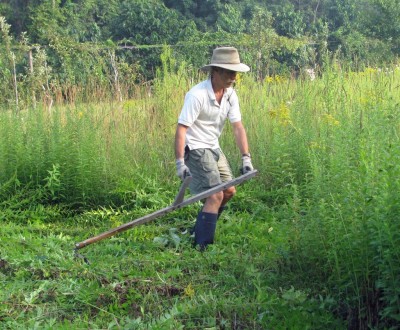
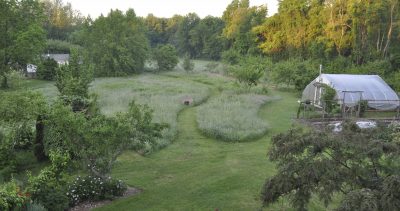

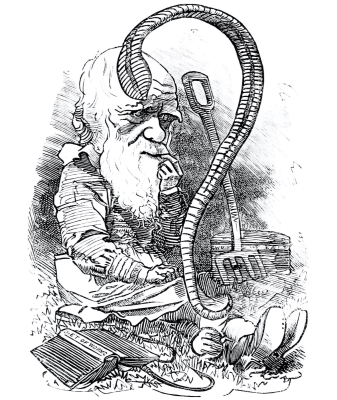

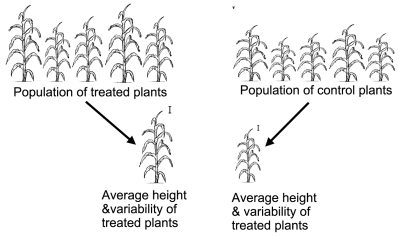
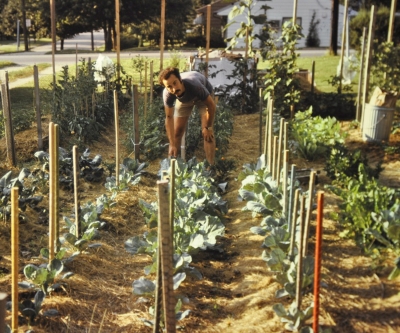
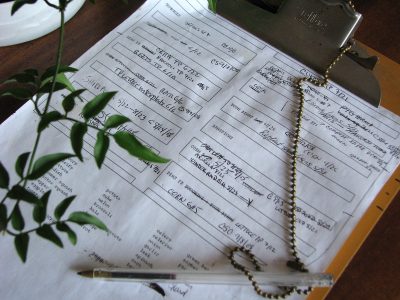 In practice, I mostly pay attention to rotation of plants most susceptible to diseases, which are cabbage and its kin (all in the Brassicaceae), cucumber and its kin (Cucurbitaceae), tomato and its kin (Solanaceae), beans and peas (Fabaceae), and corn (sweet or pop, in the Gramineae).
In practice, I mostly pay attention to rotation of plants most susceptible to diseases, which are cabbage and its kin (all in the Brassicaceae), cucumber and its kin (Cucurbitaceae), tomato and its kin (Solanaceae), beans and peas (Fabaceae), and corn (sweet or pop, in the Gramineae). Root, leafy, and fruiting vegetables have somewhat different nutrient needs, so in the ideal garden these crops are rotated to make best use of soil nutrients.
Root, leafy, and fruiting vegetables have somewhat different nutrient needs, so in the ideal garden these crops are rotated to make best use of soil nutrients.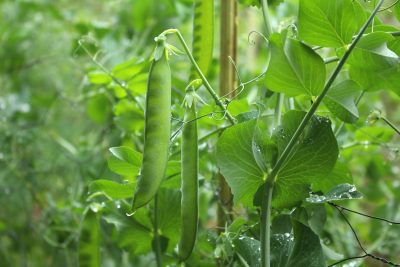 A few years ago they stopped bearing well, collapsing with yellowing foliage not long after they bore their first pods.
A few years ago they stopped bearing well, collapsing with yellowing foliage not long after they bore their first pods.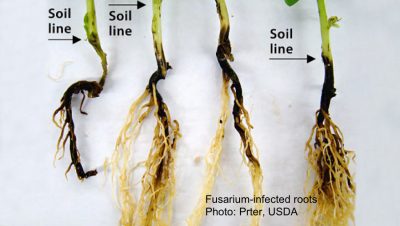 Plants infected by aphanomyces have fewer branch roots and what roots there are lack the plump, white appearance of healthy roots.
Plants infected by aphanomyces have fewer branch roots and what roots there are lack the plump, white appearance of healthy roots.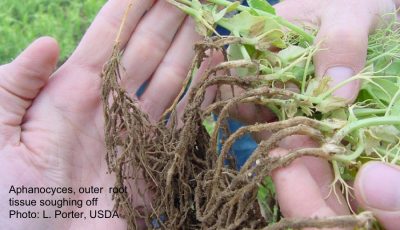
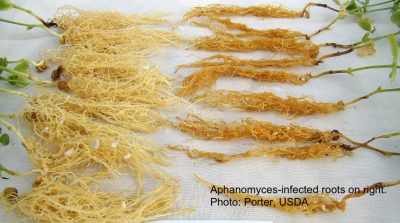
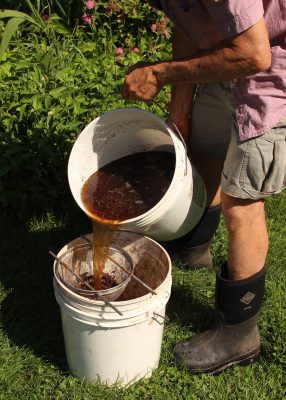 My tea is nothing more than the liquid strained from compost soaked in water, then applied with a watering can at the base of the pea plants.
My tea is nothing more than the liquid strained from compost soaked in water, then applied with a watering can at the base of the pea plants.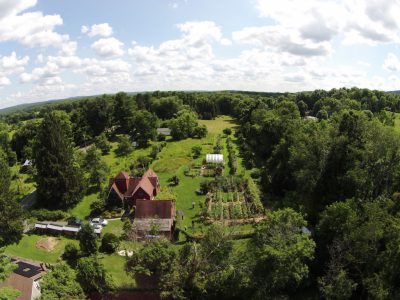

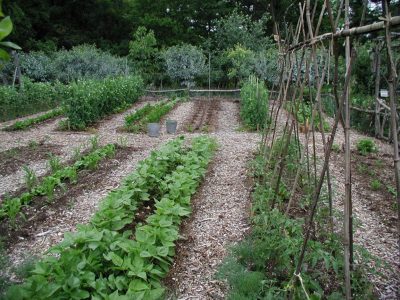 And what about winter? A greenhouse full of salad and cooking greens solved that problem, in addition to providing figs in summer and early and late season cucumbers.
And what about winter? A greenhouse full of salad and cooking greens solved that problem, in addition to providing figs in summer and early and late season cucumbers.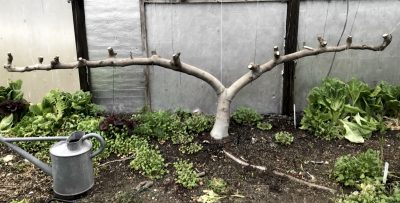
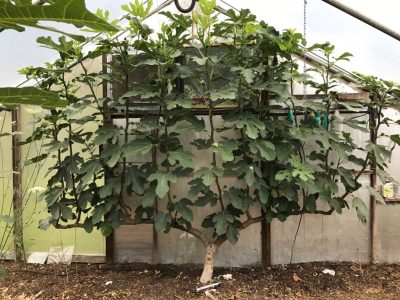
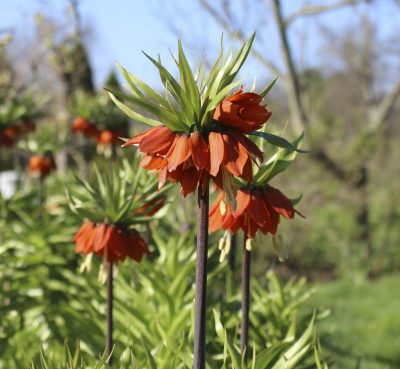
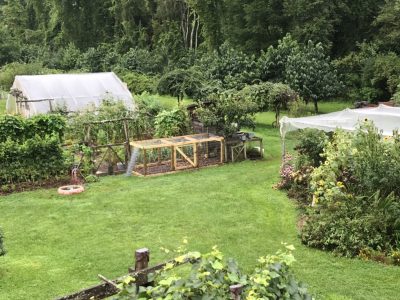

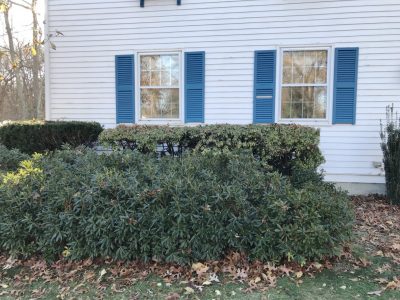

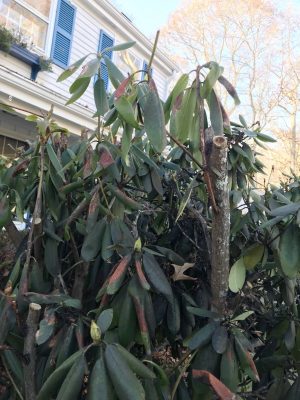

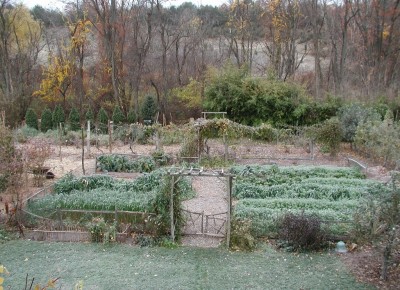 Weeds have been removed from the paths and the beds, and spent plants have been cleared away. What remains of crops is a bed with some tall stalks of kale that were planted back in spring. Yet another bed is home to various varieties of lettuce interplanted with endive, all of which went in as transplants after an early crop of green beans had been cleared and the bed was weeded, then covered with an inch depth of compost. Also still lush green is a bed previously home to edamame, which was subsequently weeded, composted, and then seeded with turnips and winter radishes back in August.
Weeds have been removed from the paths and the beds, and spent plants have been cleared away. What remains of crops is a bed with some tall stalks of kale that were planted back in spring. Yet another bed is home to various varieties of lettuce interplanted with endive, all of which went in as transplants after an early crop of green beans had been cleared and the bed was weeded, then covered with an inch depth of compost. Also still lush green is a bed previously home to edamame, which was subsequently weeded, composted, and then seeded with turnips and winter radishes back in August.
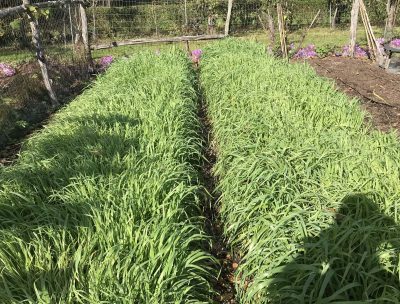 Below ground, oat roots pull up nutrients that rain and snow might otherwise leach away into the groundwater.
Below ground, oat roots pull up nutrients that rain and snow might otherwise leach away into the groundwater.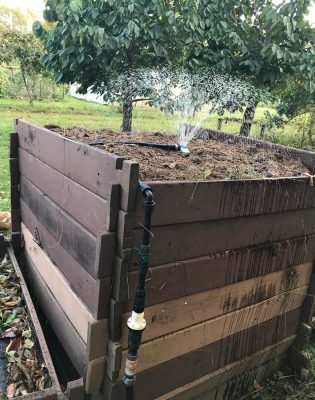
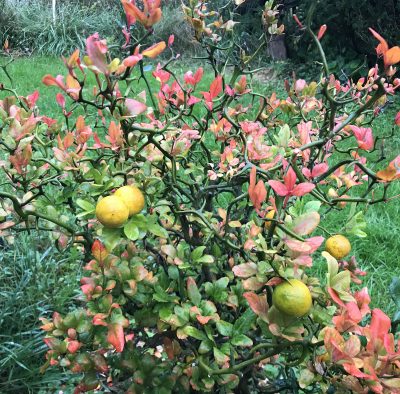
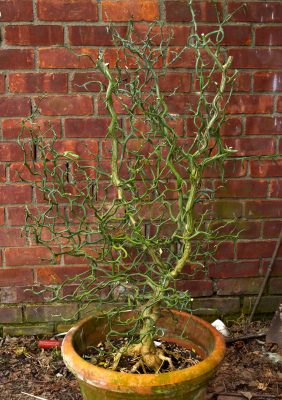
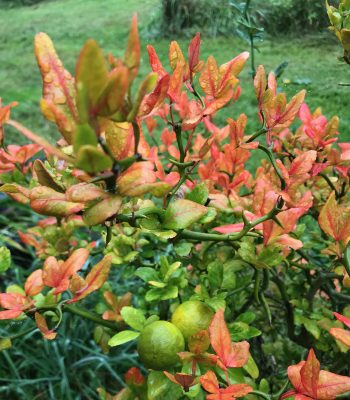
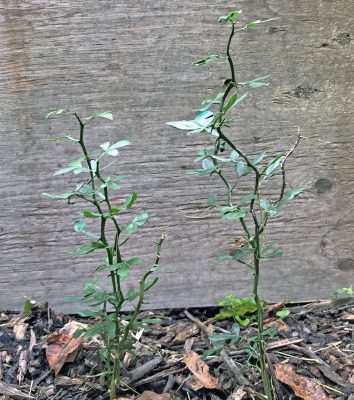
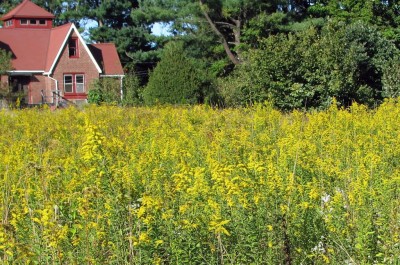 Goldenrod gets the blame for its showy, yellow blossoms during this allergy season. But the true culprit is ragweed, which goes unnoticed because it bears only small, green flowers.
Goldenrod gets the blame for its showy, yellow blossoms during this allergy season. But the true culprit is ragweed, which goes unnoticed because it bears only small, green flowers.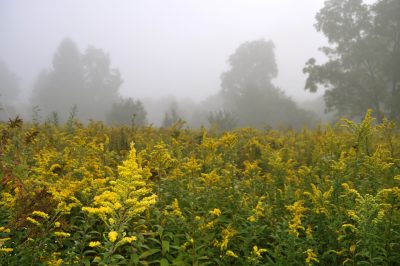
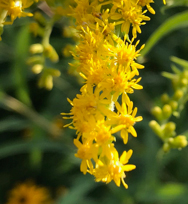
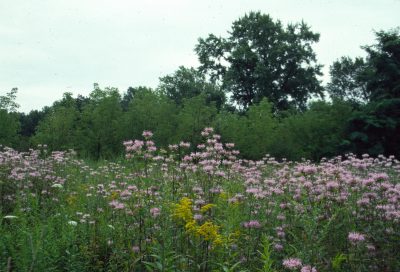
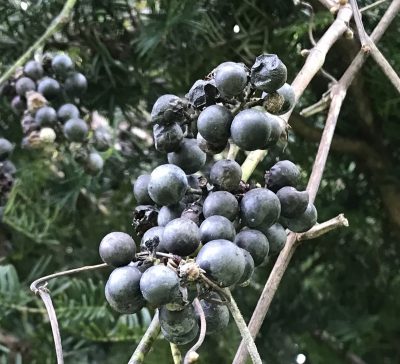
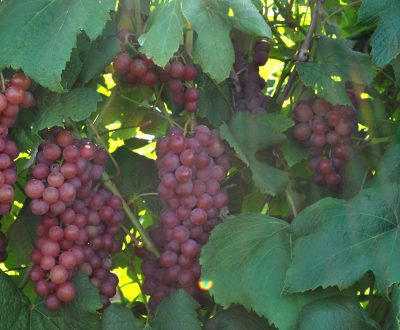
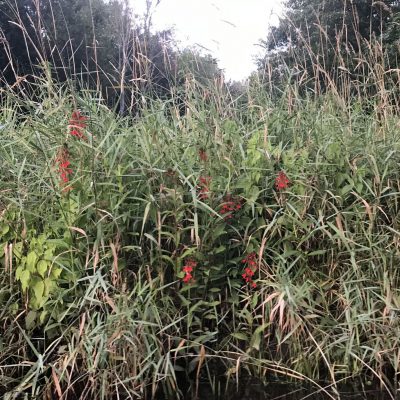 More than I have ever seen in the wild. (In Chanticleer Garden outside Philadelphia is a wet meadow planted thickly with cardinal flowers.)
More than I have ever seen in the wild. (In Chanticleer Garden outside Philadelphia is a wet meadow planted thickly with cardinal flowers.)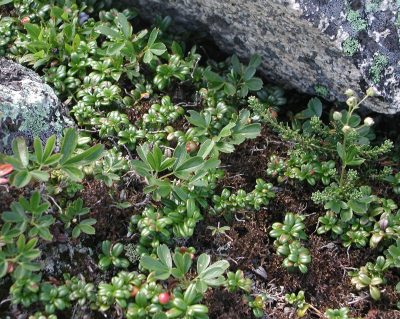
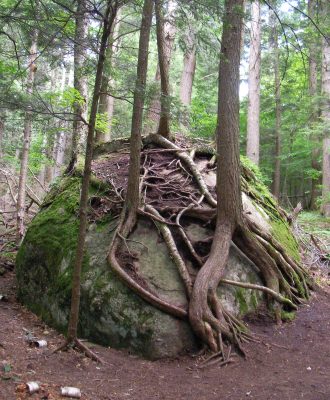
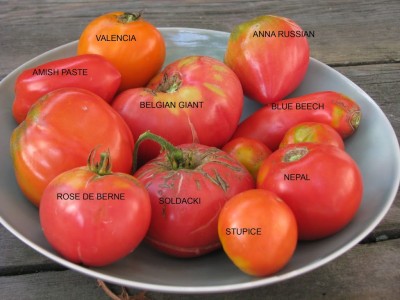 (Compost is all my vegetables get.) And perhaps focussing more on what food really tastes like. Does Sugarbuns supersweet really taste like corn. Or a candy bar?
(Compost is all my vegetables get.) And perhaps focussing more on what food really tastes like. Does Sugarbuns supersweet really taste like corn. Or a candy bar?